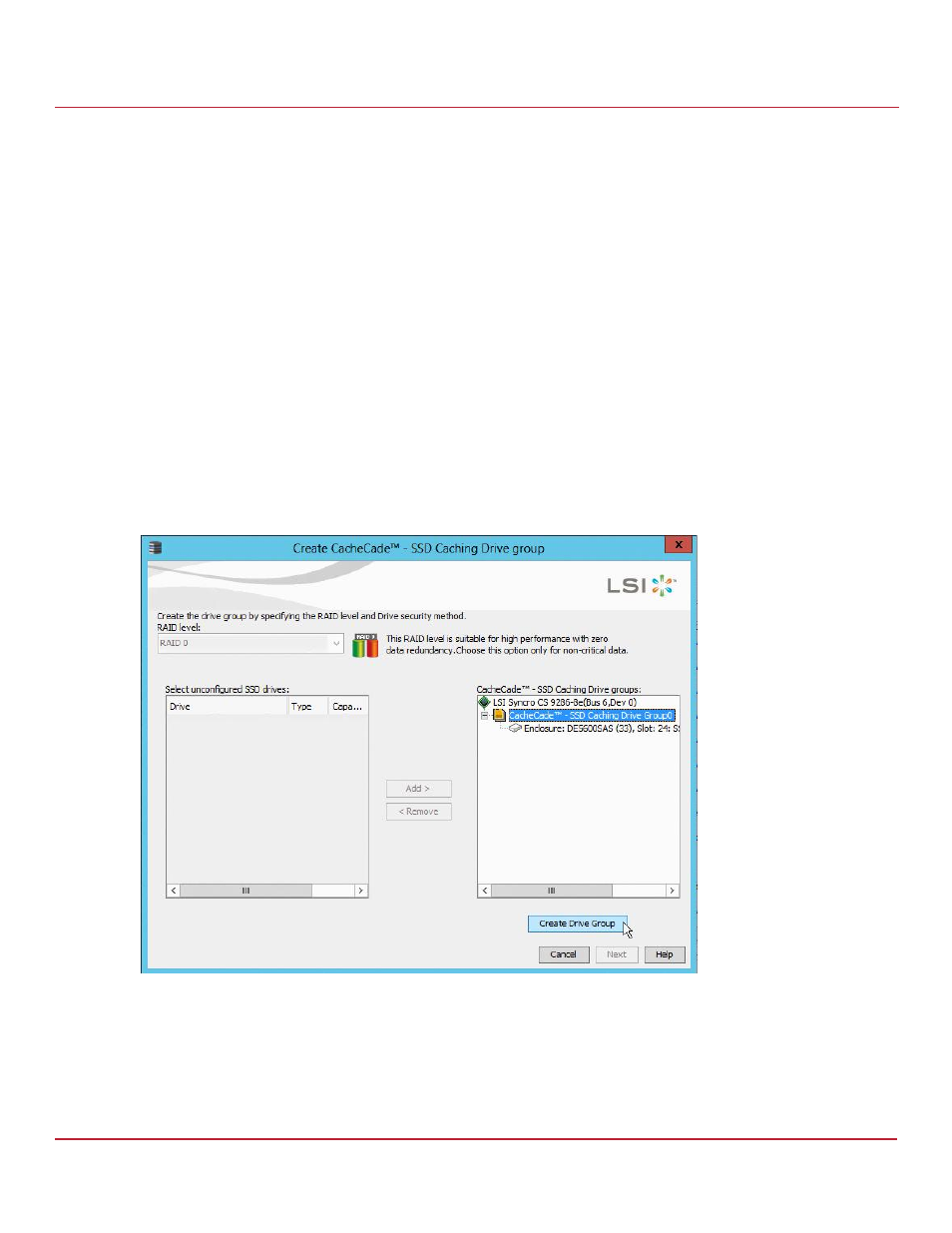Avago Technologies Syncro CS 9286-8e User Manual
Page 25

Avago Technologies
- 25 -
Syncro CS 9286-8e Solution User Guide
November 2014
Chapter 3: Creating the Cluster
HA-DAS CacheCade Support
The Syncro CS 9286-8e solution requires the use of SAS SSDs that support SCSI-3 persistent reservations (PR) for
CacheCade VDs. LSI maintains a list of SAS SSD drives that meet the HA-DAS requirements
NOTE
A CacheCade VD is not presented to the host operating system, and it
does not move to the peer controller node when a failover occurs. A
CacheCade VD possesses properties that are similar to a VD with
exclusive host access. Therefore, the CacheCade volume does not
cache read I/Os for VDs that are managed by the peer controller node.
Follow these steps to create a CacheCade 1.0 VD as part of a Syncro CS 9286-8e configuration. The procedure
automatically associates the CacheCade volume with all existing shared VDs in the configuration. Be sure that one or
more SAS SSD drives are already installed in the system. Also, be sure you are using a version of MegaRAID Storage
Manager that supports
HA-DAS.
1.
In MegaRAID Storage Manager, open the physical view, right-click on the controller name and select Create
CacheCade SSD Caching.
2.
In the Drive Group window, set the CacheCade RAID level and select one or more unconfigured SSD drives. Use
the Add button to place the selected drives into the drive group.
RAID 0 is the recommended RAID level for the CacheCade volume.
The following figure shows the CacheCade drive group.
Figure
16 Creating a CacheCade Drive Group: 1
3.
Click Create Drive Group and then click Next.
4.
In the Create CacheCade SSD Caching Virtual Drive window, update the SSD Caching VD name and set the size
as necessary.
The maximum allowable size for the CacheCade volume is 512 GB. To achieve optimal read cache performance,
the recommended best practice is to make the size as large as possible with the available SSDs, up to this limit.
